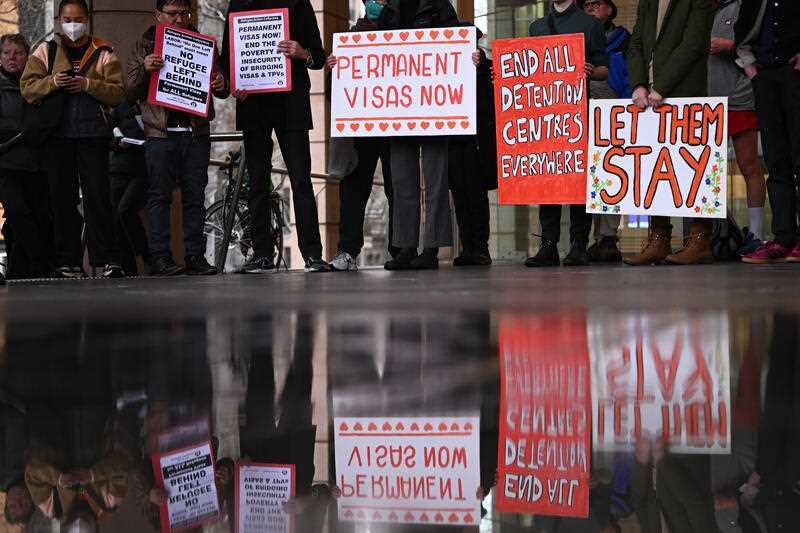An Iranian asylum seeker has described Australia’s bridging visa system as a form of modern slavery, saying the restrictions imposed on work are leaving vulnerable people exposed.
The permits allow people to remain in Australia temporarily while their applications for permanent visas are processed.
Visa holders who meet the eligibility requirements are able to work but conditions might be attached.
These restrictions range from the number of hours worked to the location, duration and occupation involved.
Betia Shakiba, a final-year law student who arrived in Australia by boat with her family in 2012, said surviving without work as an asylum seeker was a tall order.
She now holds a Safe Haven Enterprise visa, which gives her work and study rights.
Appearing before a Senate committee into migration and workforce issues, Ms Shakiba raised the experience of her mother, who she said was in an abusive relationship but feared leaving her partner due to her precarious visa status.
Ms Shakiba said the man retaliated against her mother for leaving him by reporting her to the immigration department.
“The temporary nature of the bridging visa is a form of modern slavery and many women facing domestic violence are staying in their toxic relationship because they are too scared that their (refugee) cases will be ruined,” she told the inquiry.
“Asylum seekers are denied study rights, working rights and the right to access Medicare. They are not able to see their families and many of them have been waiting for years to receive a protection visa.
“We need to ask ourselves why we have such a cruel system for asylum seekers. Why are they not given a fair chance?”
The Department of Home Affairs has been contacted for comment.
Hannah Dickinson from the Asylum Seeker Resource Centre described the migration system over the last 10 years as chaotic, discriminatory and extremely slow.
“We want pragmatic, humane and responsible policymaking and to achieve a recognition that you can’t separate migration and refugee policy,” she said.
Net migration has surged since Australia’s borders reopened after COVID-19, but most of the entrants have come on temporary visas, swamping the number of permanent migrants.
The Albanese government will on Thursday release a scathing assessment of Australia’s migration system following an inquiry conducted by Martin Parkinson, the former head of the prime minister’s department, and several other prominent figures.
One chapter released ahead of the full report warned Australia was becoming a nation of “permanently temporary” residents.
Gabriel Deng from the Migrant Workers Centre said temporary visa holder numbers had reached record levels.
He said about eight per cent of the national population – roughly two million people – were in Australia on some form of temporary visa, most of them international students.
Some employer groups are calling for looser restrictions on skilled migration caps and target industries, while others want a rethink of English language requirements and rules around post-study employment.
1800 RESPECT (1800 737 732)
Lifeline 13 11 14
By Farid Farid in Sydney
Get local, national and world news, plus sport, entertainment, lifestyle, competitions and more delivered straight to your inbox with the Canberra Daily daily newsletter. Sign up here.



